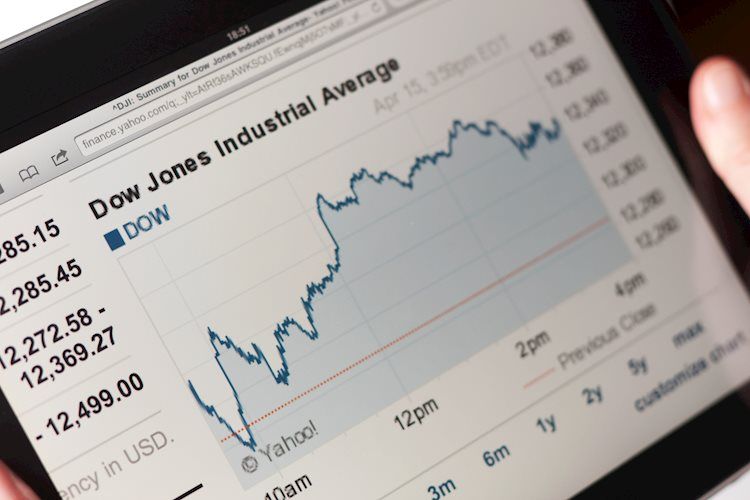By Marc Rubinstein
BlackRock Inc is used to breaking records. The world’s largest asset management company was the first company to break the $10 trillion mark in assets under management. But the bigger they are, the harder they fall. And this year BlackRock set another record: the largest amount of money lost by a company in a six-month period. In the first half of the year, it lost 1.7 trillion. dollars of her clients’ money.
The company’s management was quick to cite poor market conditions in the first half when it presented investment returns last week. “2022 ranks as the worst start in 50 years for both stocks and bonds,” said Chairman and CEO Larry Fink.
While few companies are able to avoid what the market throws at them, some at least try to overcome it. BlackRock is increasingly giving up: at the end of June, just a quarter of its assets were able to beat a benchmark – instead of tracking it seamlessly as passive strategies are meant to do. That’s down from a third when BlackRock bought Barclays Global Investors in 2009 to become the leading player in ETFs.
In the equity sector, the divergence is particularly stark. Across the industry, assets have moved away from active strategies and into passive ones. In BlackRock’s case, there have been roughly $21 billion in outflows from active equity over the past decade, while $730 billion has flowed into traded stocks. The company’s passive holdings in stocks are now 10 times larger than its active holdings, although it does employ some active multi-asset and alternative strategies that close the gap.
For fixed income portfolio managers, the evolution of activities portends an ominous future.
BlackRock’s roots are in active fixed income. Fink founded the firm in 1988 around strategies that “emphasize value creation through security selection, and are implemented by a team of highly qualified portfolio managers using a rigorously disciplined investment process,” according to a 1999 listing prospectus.
Although the company launched the first US-based bond ETF in December 2002, it did not have the same traction as stock ETFs. In BlackRock’s case, $280 billion has continued to flow into active fixed income over the past 10 years. Fixed income is the biggest downside to what’s left of the company’s active management activities. It had $954 billion in actively managed bond funds as of June 30, compared with $393 billion in stocks. Liabilities have increased, but are only 1.5 times larger than assets in fixed income – a much smaller gap than in equity.
All that may be about to change. The collapse of bond markets this year has caused an outflow of funds from active funds to fixed income. BlackRock saw its clients withdraw more than $20 billion during the first half of the year in a disaster that caused more than $200 billion in outflows from the industry. Some of that has flowed into passive funds, namely ETFs, where BlackRock is earning more than its fair share. so far in the year, it has gained $39 billion in new funds in ETFs and $25 billion in other strategies. The shift to liabilities that started in equity is now spreading to fixed income.
Until recently, bond ETFs were viewed with suspicion. In 2015 investor Carl Icahn, sitting next to Fink on television, called BlackRock “an extremely dangerous company.” His rationale was that the company’s ETFs encapsulate illiquid bonds in inappropriately liquid wrappers. “They are going to hit a black rock,” he said.
However, during the March 2020 panic, when bond markets froze, ETFs performed well. Instead of transmitting the problems, bond ETFs absorbed them while providing investors with much-needed liquidity. This real-life test validated the structure, and now that bonds are going down, money abounds.
In an earnings call, Fink explained the benefits. He noted that investors are using ETFs to quickly and efficiently gain exposure to thousands of global bonds and reshape their portfolios. “Challenges from high inflation to rising interest rates are attracting more first-time bond ETF users and prompting existing investors to find new ways to use ETFs in their portfolios,” he said.
For now, BlackRock’s fixed income portfolio managers are mounting a solid defense. Unlike their equity peers, their performance has been relatively strong. In the first six months of the year, the funds they oversee are down 10.6%, marginally better than the firm’s fixed-income ETFs. According to the firm, about half of taxable fixed income assets outperform the benchmark on an annual basis, compared to about a third of traditionally managed assets.
But if fixed income follows the path of equities, the divergence between passive and active flows will increase. “These are the early days of a major shift in how people invest in fixed income,” Fink said last week. “We expect the bond ETF industry to nearly triple to $5 trillion in AUM by the end of the decade.”
Until then, BlackRock could be much higher but its fortunes will remain tied to the markets.
Source: Bloomberg
I’m Ava Paul, an experienced news website author with a special focus on the entertainment section. Over the past five years, I have worked in various positions of media and communication at World Stock Market. My experience has given me extensive knowledge in writing, editing, researching and reporting on stories related to the entertainment industry.





